In the third instalment of a series on how artists, art entrepreneurs and art administrators are trying to find newer ways of reaching out to a home-bound audience in the time of a pandemic, Charles Seymour takes a virtual tour of three premier Hong Kong museums to find out how they stack up against the world’s finest.
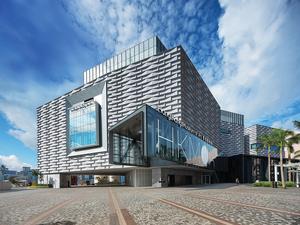 Hong Kong Museum of Art’s entire collection of 17,000 exhibits are available to view online through the Virtually@HKMoA platform. (PHOTO PROVIDED TO CHINA DAILY)
Hong Kong Museum of Art’s entire collection of 17,000 exhibits are available to view online through the Virtually@HKMoA platform. (PHOTO PROVIDED TO CHINA DAILY)
The online world is the new frontier for museums.
Some may disagree with the idea as most museums around the world had an online presence since the 1990s. However, there is no doubt that COVID-19, which triggered forced closure of many cultural facilities in Hong Kong since Jan 29, has prompted the city’s museums to reposition themselves in the virtual realm in the face of unprecedented challenges.
Now that online resource sharing by museums is quite the norm, museum administrators have been wondering about the way forward. Questions such as how online museums might adapt to a COVID-19-free world, whether online and physical avatars of the same institution will end up fighting for the same set of resources if they are allowed to exist side by side are on their minds.
Museums in the city — such as the now fully-open Hong Kong Maritime Museum (HKMM), partially-open Hong Kong Museum of Art (HKMoA), and still-closed Hong Kong Science Museum (HKSM) — have been rethinking their online strategy to deal with the present crisis as well as the future.
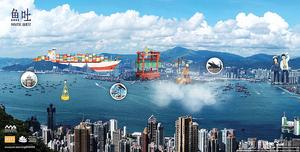 Interactive games on Hong Kong Maritime Museum’s online platform can help enhance a player’s understanding of maritime trade. (PHOTO PROVIDED TO CHINA DAILY)
Interactive games on Hong Kong Maritime Museum’s online platform can help enhance a player’s understanding of maritime trade. (PHOTO PROVIDED TO CHINA DAILY)
Uploading content
“Our entire collection of 17,000 sets of exhibits could all be viewed online,” says HKMoA director Maria Mok. “It’s not something many museums can claim.” This large-scale databank is part of HKMoA’s online platform Virtually@HKMoA, launched on March 30 — “a one-stop experience” that enables HKMoA to “stay in touch with visitors virtually.”
Virtually@HKMoA features a wide array of pre-existing and new online materials, such as images, texts, e-books, as well as animations created to complement exhibitions, and television programs produced by Radio Television Hong Kong. The platform also includes audio guides designed specifically for the visually impaired. “These guides give a detailed aural account of the visual characteristics of the works, which could assist listeners in their appreciation of different art pieces, whether they’re present at the museum or not,” Mok says.
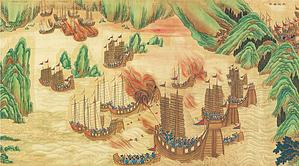 Details of the Pacifying the South China Sea scroll, created by a Qing painter, can be accessed on Hong Kong Maritime Museum’s website. (PHOTO PROVIDED TO CHINA DAILY)
Details of the Pacifying the South China Sea scroll, created by a Qing painter, can be accessed on Hong Kong Maritime Museum’s website. (PHOTO PROVIDED TO CHINA DAILY)
HKMoA’s Tsim Sha Tsui neighbor HKSM launched a virtual tour in April, allowing visitors access to its current exhibition. The show examines the role science plays in artefact conservation and features exhibits from the Palace Museum in Beijing. HKSM Director Paulina Chan says that in addition to 360-degree photography and text panels, HKSM’s online offerings include videos with a host introducing the exhibits to visitors, giving a virtual tour “some human touch and warmth.”
“We don’t have a vast collection. As a science museum, our exhibitions don’t lend themselves to virtual renditions as the emphasis is on hands-on experience, so participation in person is key. Therefore, this virtual tour is specifically put together for the COVID-19- induced closure,” says Chan.
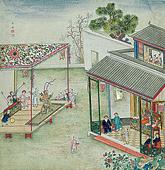 Qing Dynasty (1644 –1912) paintings recording the porcelain production process on Hong Kong Maritime Museum’s website. (PHOTO PROVIDED TO CHINA DAILY)
Qing Dynasty (1644 –1912) paintings recording the porcelain production process on Hong Kong Maritime Museum’s website. (PHOTO PROVIDED TO CHINA DAILY)
While HKMM has not put anything online specifically in response to COVID-19, one could easily find a wealth of resources on their website. The portal features an online game on maritime trade developed with a local game producer and the US Consulate, an interactive learning platform that helps users to develop an understanding of Hong Kong’s ports, a documentary on the heritage of lighthouses, and the Google Arts & Culture page which showcases HKMM’s collection highlights.
“We’ve always had a digital commitment, which dates back to our opening in 2003,” says HKMM Director Richard Wesley. He reveals that HKMM changed its online strategy since COVID-19 started. “In our own modest ways, we’ve doubled our website hits. Whether the increase is a result of our efforts or because people are just bored is difficult to determine, but with the right strategy, you can… stimulate people to explore and learn what you’re doing.”
 Hong Kong Museum of Art’s website features the animation and picture book, A Day at HKMoA — the museum experience as seen through the eyes of a little girl. (PHOTO PROVIDED TO CHINA DAILY)
Hong Kong Museum of Art’s website features the animation and picture book, A Day at HKMoA — the museum experience as seen through the eyes of a little girl. (PHOTO PROVIDED TO CHINA DAILY)
Benefits and challenges
“One of the most obvious advantages is that online viewing enables visitors to enlarge digital images for inspecting details of a work that is otherwise impossible,” Mok explains. “A good example is the awe-inspiring ceiling of the Sistine Chapel.” She says that this also allows visitors to peruse a work up close without running the risk of causing damages.
“If you want in-depth knowledge, then the online experience is far superior,” says Wesley. “You can learn more about the Mona Lisa through the Louvre’s website than by standing in front of it with 300 other people.” He says that digital platforms are likely to pique web surfers’ interest in a museum’s collection, which could help “boost live visitations to the museums.”
 Hong Kong Museum of Art’s Extraordinary Peaks video helps viewers appreciate Chinese calligraphy and landscape painting through animation. (PHOTO PROVIDED TO CHINA DAILY)
Hong Kong Museum of Art’s Extraordinary Peaks video helps viewers appreciate Chinese calligraphy and landscape painting through animation. (PHOTO PROVIDED TO CHINA DAILY)
Wesley adds, “After all, we’re in the knowledge dissemination business. It’s (the online experience) much more effective and will be able to reach more people.”
With most museums the world over offering online content, there is stiff competition to grab eyeballs. “If you’re producing knowledge, which isn’t being consumed online, you’ve got to rethink what you’re producing and how you’re presenting it,” Wesley states.
Mok says, “How we market our programs is very important. We have to be very sensitive to our audiences’ needs and interests, so that we can effectively speak to them.” She encourages curators and designers to contribute to promotional work, in keeping with the demands of advertising online exhibitions.
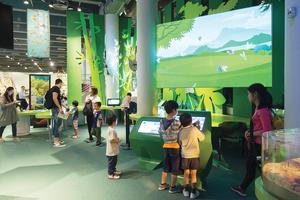 In pre-COVID-19 days, Hong Kong Science Museum’s Biodiversity Gallery drew a lot of young visitors who enjoyed the interactive games. (PHOTO PROVIDED TO CHINA DAILY)
In pre-COVID-19 days, Hong Kong Science Museum’s Biodiversity Gallery drew a lot of young visitors who enjoyed the interactive games. (PHOTO PROVIDED TO CHINA DAILY)
Often the lack of resources comes in the way of producing high-quality online content and effective publicity. Chan reveals that HKSM has hosted just two virtual tours so far, the other one back in 2013; one of the reasons being the dearth of time and resources required to put together such shows.
Wesley agrees, “We just don’t have the budget for a physical exhibition, printed catalogue, and also digital record. It’s expensive and you’ve got to continually upgrade.”
Funding agencies need to take a different view of museums opting to put their collections online, he contends. “Funders and grant bodies have got to recognize that this is a legitimate way of determining an institution’s success by the traffic they generate, the relationship they have with their electronic viewing audience.”
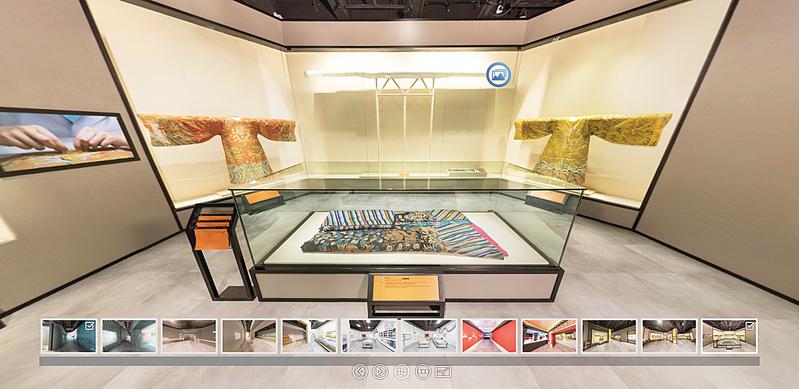 Hong Kong Science Museum is hosting a virtual tour highlighting the role of science in conserving ancient artifacts in Beijing’s Palace Museum. (PHOTO PROVIDED TO CHINA DAILY)
Hong Kong Science Museum is hosting a virtual tour highlighting the role of science in conserving ancient artifacts in Beijing’s Palace Museum. (PHOTO PROVIDED TO CHINA DAILY)
The online race
Hong Kong has a lot of ground to cover when compared to the online experience provided by some of the world’s most sought-after museums, feels Vivian Ting, lecturer of Advanced Museum Studies at the Chinese University of Hong Kong. Virtual museums should be more than a mere reiteration of what is seen in real life, she says.
Citing Tate, which has four physical museums in London, Liverpool and Cornwall, Ting says, “They have a separate digital curatorial department that works specifically on virtual exhibitions. They consider their online museum their fifth branch which brings it to a whole new level.” Evidently, Tate’s online experiences are created as part of a long-term commitment, rather than a reaction to a pandemic — an idea Hong Kong could consider emulating, going forward.
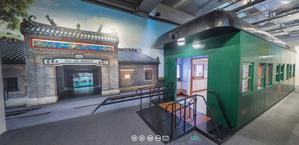 Hong Kong Science Museum’s virtual tour of an exhibition on conservation practices in Beijing’s Palace Museum was launched in response to the shutdown due to COVID-19. (PHOTO PROVIDED TO CHINA DAILY)
Hong Kong Science Museum’s virtual tour of an exhibition on conservation practices in Beijing’s Palace Museum was launched in response to the shutdown due to COVID-19. (PHOTO PROVIDED TO CHINA DAILY)
“In addition to interpretation, the digital team should link the collection to viewers’ daily lives. They need to be very well-versed in technology and would strive to reduce the gap between the institution and viewers in order to aid the dissemination of cultural knowledge. Many issues are at stake here, such as marketing and audience development,” Ting adds.
She hastens to add that Hong Kong does not have a sustained culture of museum-going. “The concept of museums is very European. The first public art museum in the city, HKMoA, didn’t come into existence until 1962, when the British Museum was founded in 1753.”
Ting says it is not just the Hong Kong museums that need to catch up with the world’s finest in terms of creating online experiences. “The society, as a whole, needs to progress together. The public should in the very least get to know what the museums are offering. Let the museums know what you like and what they could improve on. … That’s when we all truly make progress.”
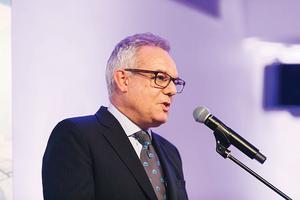 Hong Kong Maritime Museum Director Richard Wesley says the museum has doubled website hits since the COVID-19-induced temporary closure. (PHOTO PROVIDED TO CHINA DAILY)
Hong Kong Maritime Museum Director Richard Wesley says the museum has doubled website hits since the COVID-19-induced temporary closure. (PHOTO PROVIDED TO CHINA DAILY)
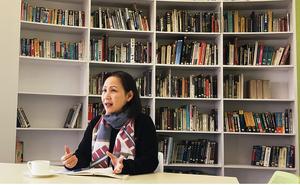 Hong Kong Science Museum’s online offerings include 360-degree photographs and guided virtual tours, says Director Paulina Chan. (PHOTO PROVIDED TO CHINA DAILY)
Hong Kong Science Museum’s online offerings include 360-degree photographs and guided virtual tours, says Director Paulina Chan. (PHOTO PROVIDED TO CHINA DAILY)
Will virtual replace physical?
The consensus among museum administrators, art historians and industry-watchers is that far from virtual museums replacing their physical counterparts, the two will continue to complement and enhance each other. “To feel the physicality of the exhibition — such as the lighting, ambience, and space is integral to the experience. Virtual museums can’t offer a holistic experience like this,” Chan remarks. “Nothing compares to the power to stun with a physical object, like a mummy, when you’re in the same room with it. This experience is irreplaceable.”
Mok agrees, “While technology allows one to see the Sistine Chapel ceiling up close, the sense of wonder elicited by its grandeur simply can’t be replicated digitally. It could only be felt physically.’
 The experience of visiting a museum would be hard to replicate digitally, says Hong Kong Museum of Art’s Director Maria Mok. (PHOTO PROVIDED TO CHINA DAILY)
The experience of visiting a museum would be hard to replicate digitally, says Hong Kong Museum of Art’s Director Maria Mok. (PHOTO PROVIDED TO CHINA DAILY)
Wesley adds that it is difficult to translate human interactions at exhibitions electronically. “You can’t capture face-to-face nuances. By nature, digital is controlled. What we’re looking for is the uncontrolled, the emotional, the follow-up, you can only do that in person. If you want an emotional experience, you can’t replace a museum.”
While the spread of COVID-19 meant temporary closure of museums around the world, those in charge of programing say the break has been an opportunity to rethink their online strategies and reposition their digital presence in a bid to stay relevant in the 21st century.
Wesley says that one of the takeaways from the situation is the realization that visitors buying a ticket to visit museums “can’t be taken for granted.” He reckons the pandemic will lead to a renaissance of the digital platform. “There will always be reasons for disruptions, cost, extra competition. … So the digital space is a new battleground which, I think, all management will look at in a refreshed way. The more accessible you make it, the better.”


